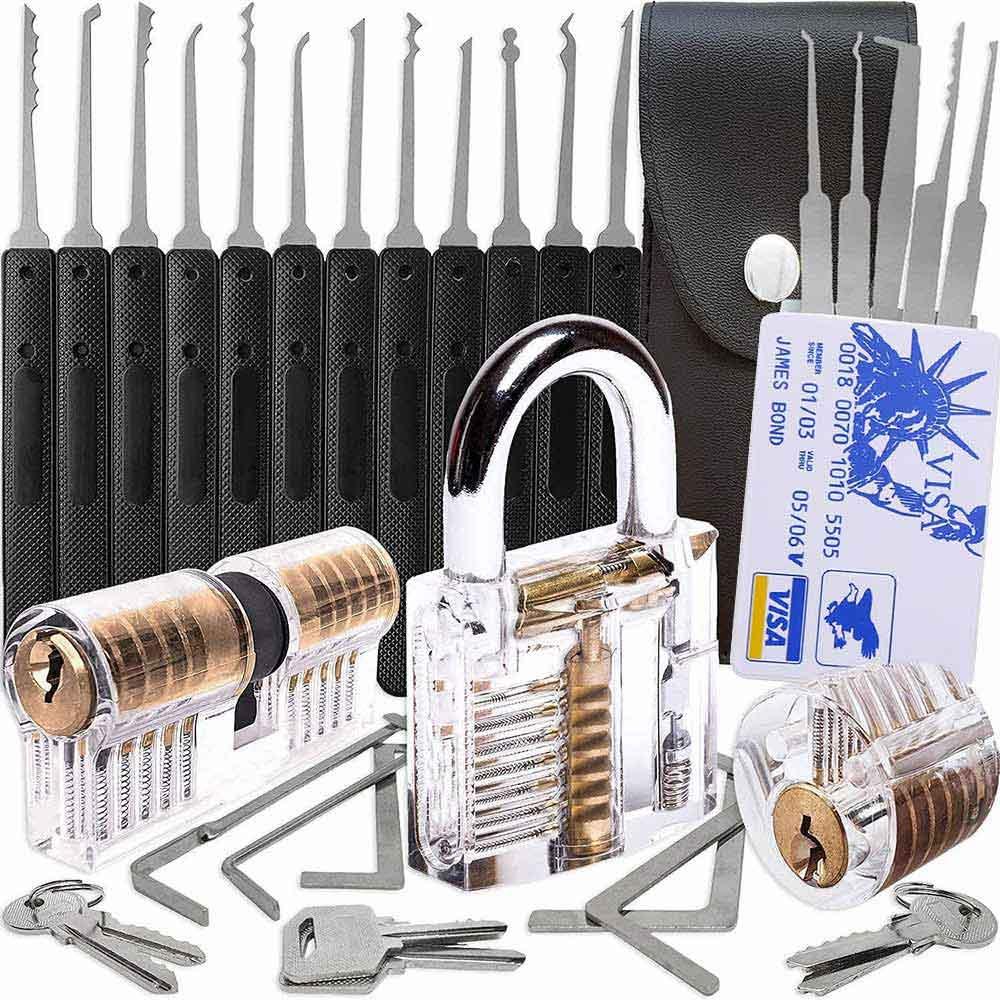Lock picking, a skill often associated with locksmiths and detectives, has captivated the curious minds for centuries. Behind this intriguing craft lies an array of specialized tools that enable individuals to gain access to locks and unravel the mechanisms within. In this article, we delve into the world of lock picking tools, exploring their purpose, techniques, and the responsible use of this knowledge.
Understanding Lock Picking Tools
Lock picking tools are designed to manipulate the intricate mechanisms within locks to gain entry without the use of a key. These tools come in various shapes and sizes, each serving a specific purpose in the art of lock picking.
a) Tension Wrench: A crucial tool used to apply tension to the lock, creating a binding force on the pins and allowing them to be manipulated.
b) Picks: These slender and precise instruments, such as hook picks and diamond picks, are used to individually manipulate the pins within a lock, allowing them to reach the sheer line and unlock the mechanism.
c) Rakes: These tools have a serrated design and are used to rapidly manipulate multiple pins simultaneously, employing a raking motion to mimic the action of a key.
Techniques and Skill Development
Lock picking is a delicate skill that requires practice, patience, and a deep understanding of lock mechanisms. While it can be used for nefarious purposes, it is important to emphasize the responsible use of this knowledge, such as in locksmith training, security audits, or in cases of accidental lockouts.
To successfully pick a lock, a lock picker must employ the appropriate tension on the lock using the tension wrench while skillfully manipulating the pins or tumblers within the lock using picks or rakes. Understanding the feedback from the lock, such as subtle clicks or rotational resistance, aids in determining the correct positioning of the pins.
The development of lock picking skills is an ongoing process that requires both theoretical knowledge and hands-on practice. Beginners often start with simple locks, gradually progressing to more complex ones. Lock picking enthusiasts also engage in discussions, attend workshops, and collaborate with others to further refine their skills.
Ethical Considerations and Responsible Use
It is essential to highlight the importance of ethical considerations and responsible use when discussing lock picking tools. Lock picking should never be used for illegal purposes or to compromise the security of others. Instead, the knowledge and skills gained from lock picking can be applied in legitimate ways, such as locksmithing, security consulting, or enhancing personal security awareness.
Responsible lock picking enthusiasts emphasize the importance of seeking proper authorization before attempting to pick locks, respecting the legal boundaries and privacy rights of others. Open dialogue, education, and adherence to ethical standards within the lock picking community are essential to prevent misuse and promote the positive aspects of this craft.
Lock picking tools, when approached responsibly, offer a glimpse into the intricate mechanisms that safeguard our belongings. By understanding the purpose and techniques behind lock picking.



